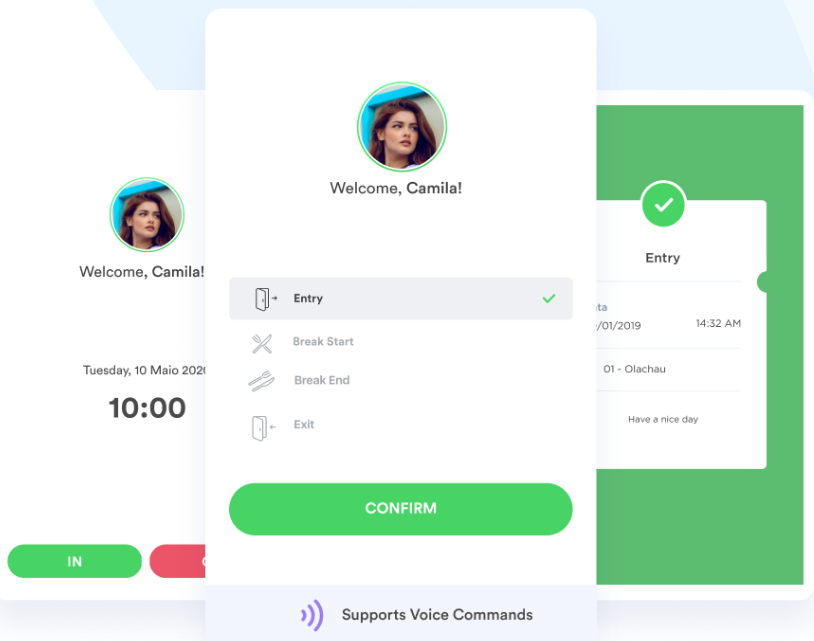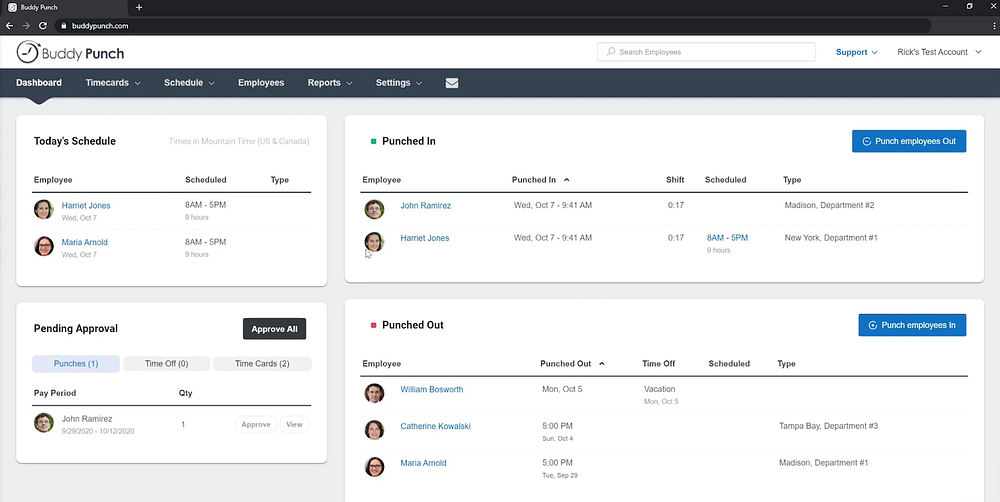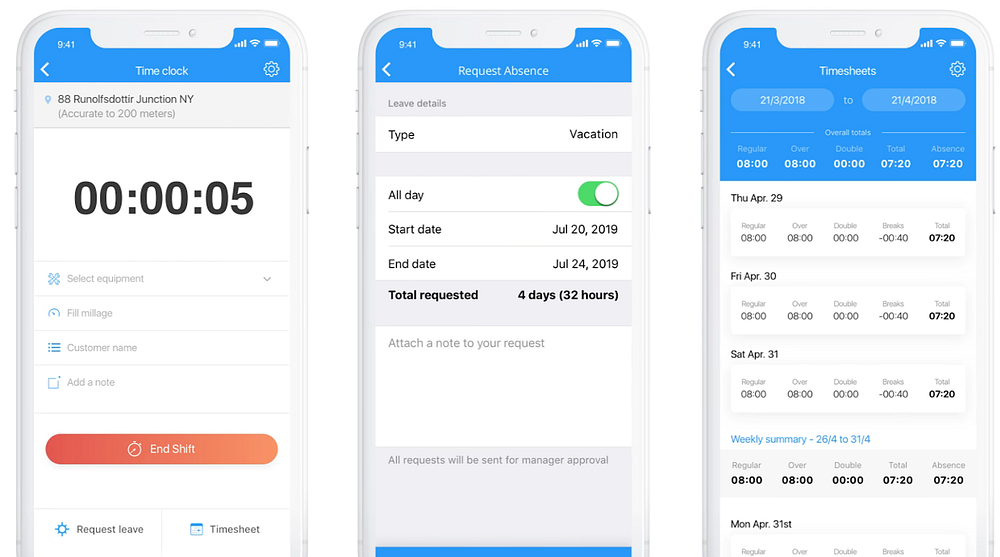In recent years, tracking employee attendance has become critical to managing a successful business. With the rise of remote work and flexible schedules, monitoring the presence and productivity of your team is more important than ever.
This comprehensive article will delve into the value of tracking employee attendance, the impact of employee absence, and how to track attendance using modern tools effectively. Furthermore, it will discuss the costs of not tracking attendance and its detrimental effects on businesses.
Throughout this article, we’ll discuss:
- The Impact of Tracking Employee Absence
- Strategies to Manage Absenteeism
- The Cost of Not Tracking Attendance
- How to Track Attendance in the Modern Workplace with the Best Tools in 2023
- Key Features to Look for in Attendance Tracking Solutions
- Attendance Tracking Tools: Boosting Efficiency and Productivity
- Wrap-up: Leverage the Best Attendance Tracking Tool in 2023 to Maximize Productivity

The Impact of Tracking Employee Absence
Tracking employee absence is essential for understanding overall health and productivity. Absenteeism can significantly affect the bottom line, as it leads to:
- Decreased productivity
- Increased workload for other employees
- Potential delays in project completion
- Higher costs due to hiring temporary workers or paying overtime
By monitoring and addressing absenteeism, businesses can identify patterns and root causes, enabling them to implement strategies that minimize the adverse effects of employee absence.
Strategies to Manage Absenteeism
To effectively manage absenteeism, companies can employ various strategies. These strategies aim to create a supportive work environment and address the underlying issues contributing to absenteeism.
Establish Clear Attendance Policies
Developing and communicating clear attendance policies is the first step in managing absenteeism. Ensure that employees understand the expectations and consequences associated with attendance. This includes detailing the procedures for reporting absences, requesting time off, and outlining disciplinary actions for excessive absenteeism.
Offer Flexible Work Arrangements
Providing flexible work options can help reduce absenteeism by accommodating employees’ personal and family needs. Options include remote work, flexible hours, and job sharing. By creating a more adaptable work environment, employees may feel less inclined to take unnecessary absences.
- Remote work: Allowing employees to work from home or another location outside the office.
- Flexible hours: Offering the possibility to adjust work schedules according to personal needs or preferences.
- Job sharing: Two or more employees sharing the responsibilities and workload of a single full-time position.

Implement Employee Wellness Programs
Employee wellness programs can significantly contribute to reducing absenteeism. Such initiatives promote a healthy lifestyle, encourage preventive care, and address mental health issues. By investing in employees’ well-being, companies can foster a healthier and more engaged workforce.
Some components of an effective employee wellness program include:
- Health screenings and assessments
- Fitness programs and challenges
- Mental health support and resources
- Nutrition education and guidance
- Stress management techniques
Encourage Open Communication
Maintaining open lines of communication between management and employees is crucial in addressing attendance issues. Encourage employees to discuss their concerns and provide feedback on company policies. This approach allows companies to identify and address the root causes of absenteeism effectively.
Ways to foster open communication include:
- Regular team meetings and one-on-one check-ins
- Anonymous feedback and suggestion systems
- Open-door policies for managers and supervisors
- Employee surveys and engagement initiatives
The Cost of Not Tracking Attendance

Failing to track employee attendance can have significant financial and operational consequences for businesses. These repercussions include:
Lost Productivity
When employees are absent, their workload must be redistributed among the remaining staff or postponed until their return. This situation can lead to decreased productivity, as employees may struggle to keep up with additional responsibilities or experience burnout.
Factors contributing to lost productivity:
Overworked employees: Increased workload can lead to fatigue and reduced efficiency.
- Unfamiliar tasks: Employees may be assigned tasks outside their expertise, resulting in lower-quality work.
- Reduced collaboration: Absent employees can disrupt team dynamics and hinder collaboration.
Increased Labor Costs
Frequent absences may require companies to hire temporary workers or pay overtime to cover for the missing employee. These additional labor costs can significantly impact a business’s bottom line.
Consequences of increased labor costs:
- Budget strain: Additional expenses for temporary staff or overtime payments can lead to budget overruns.
- Reduced profit margins: Increased labor costs can reduce overall profitability.
- Limited resources: Financial resources allocated to cover absenteeism could be used for other business priorities, such as growth or innovation.
Decreased Morale
Excessive absenteeism can lead to increased stress and decreased morale among the remaining employees, as they bear the burden of the additional workload. This issue can result in a vicious cycle, as low morale and job satisfaction can lead to further absenteeism.
Effects of decreased morale:
- High employee turnover: Dissatisfied employees are more likely to seek employment elsewhere, increasing recruitment and training costs.
- Poor company culture: Low morale can create an unfriendly work environment, affecting employee engagement and satisfaction.
- Reduced commitment: Employees may become less committed to the organization and its goals, impacting performance and productivity.
Compliance Issues
Failure to accurately track employee attendance can lead to legal and regulatory issues. Non-compliance with labor laws and regulations, such as overtime pay or mandatory rest breaks, can result in financial penalties and damage a company’s reputation.
Potential compliance issues and consequences:
- Wage and hour violations: Failure to accurately track and pay overtime can result in fines, back pay, and potential lawsuits.
- Breach of labor laws: Non-compliance with mandatory rest breaks or maximum working hours can lead to legal penalties and enforcement actions.
- Record-keeping violations: Inaccurate or incomplete attendance records can hinder compliance with record-keeping requirements, resulting in fines and penalties.
- Damaged reputation: Legal and regulatory issues can harm a company’s reputation, affecting its ability to attract and retain employees and customers.
How to Track Attendance in the Modern Workplace with the Best Tools in 2023
As work evolves, so must the methods for tracking employee attendance. In 2023, various digital solutions will help businesses efficiently monitor employee attendance. These advanced systems cater to the needs of modern work environments, such as remote work and flexible schedules.
1. Day.io – Best Tool for Tracking Employee Attendance in 2023

Day.io comes with a single platform with all-in-one time tracking and employee attendance features. This cloud-based system lets managers easily track employees’ hours, including start and end times, breaks taken, and more. It also allows supervisors to quickly monitor employee absences and tardiness and approve time off requests.
Employers particularly love the GPS and biometric authentication features of Day.io, as it ensures accuracy in tracking employee attendance and prevents fraud. The platform also has advanced analytics that gives employers insights into their team’s presence and performance.
Features
- Time tracking with attend tracking features
- Time clock with customizable tolerance for late-entry and early exit
- Cost and billing estimation and resource planning
- Project reports and analytics
- GPS, facial recognition, and biometrics authentication
- Attendance tracking with employee scheduler
- Leave management with customizable policies
- Real-time notifications and alerts
Pricing
The time and attendance tracking package starts from $4 per user/month.
2. Buddy Punch – Excellent Tracking and Authentication Features

Buddy Punch is another cloud-based attendance tracking system with excellent tracking and authentication features. It allows supervisors to monitor employee hours in real-time and track individual breaks’ start and end times. Additionally, it has a unique facial recognition feature that verifies an employee’s identity before they clock in or out.
Furthermore, Buddy Punch also provides comprehensive reports on employees’ daily and weekly performance, which employers can use to make informed decisions about their teams.
Features
- Real-time attendance tracking
- Facial recognition for authentication
- Customizable leave and time-off policies
- Attendance reports with analytics
- GPS tracking to monitor remote employees’ locations
- Employee scheduler with automated notifications
- Integration with payroll software for accurate billing estimations.
Pricing
Starts from $3.49 per user/month, plus a $19 base fee/month
3. Connecteam – Simple Cloud-based Attendance Tracker

Connecteam stands out from the rest with its simple cloud-based attendance tracking system. Its straightforward interface allows employers to monitor employee absences, lateness, and tardiness quickly. This platform also helps managers track employees’ hours in real time and approve or deny time off requests easily.
Connecteam has an automatic notifications feature, which sends reminders to team members when they forget to clock in or out on time. These features make it easy for supervisors to stay on top of their teams’ attendance records and accurately track employee presence.
Features
- Automated and one-click time tracking
- GPS and biometric authentication
- Real-time tracking of employees’ hours
- Automatic notifications for employee attendance
- Approve or deny time off requests with ease
- Advanced analytics to monitor presence and performance
Pricing
Free for up to ten users. The basic package starts from $29/month for the first 30 users.
Key Features to Look for in Attendance Tracking Solutions
Here are some key features to look for when choosing how to track attendance:
- Cloud-based software: This enables real-time updates and seamless access to attendance data from anywhere, anytime. Employees can quickly check in or out, and managers can monitor attendance with ease.
- Integration with other tools: Choose a solution that integrates with your existing software, such as HR systems and project management tools, for streamlined data management. This integration allows for a more comprehensive view of employee performance and productivity.
- Customizable settings: Opt for a tool that allows you to tailor attendance tracking to your organization’s specific needs, such as tracking hours worked, leaves, and overtime. Customization ensures that your tracking system aligns with your company policies and goals.
Attendance Tracking Tools: Boosting Efficiency and Productivity
Attendance tracking tools have come a long way in recent years, with numerous advanced features designed to streamline the process. These tools not only save time and effort by automating the attendance tracking process but also provide valuable insights into employee productivity and work habits.
Benefits of Modern Attendance Tracking Tools
Implementing modern attendance tracking tools can significantly improve a company’s efficiency and productivity. Some of the primary benefits include
- Automated time tracking: Automatically record employees’ working hours, eliminating the need for manual timesheets or punch cards. This automation reduces human error and simplifies the process for both employees and managers.
- Real-time visibility: Monitor employee attendance in real-time, allowing for quick adjustments to staffing or workload as needed. Real-time tracking ensures that managers can address attendance issues promptly and maintain optimal productivity levels.
- Analytics and reporting: Access detailed reports on attendance trends and patterns, empowering data-driven decision-making. Analytical tools can help identify:
- Peak productivity times
- Trends in absenteeism
- The effectiveness of attendance policies
- The potential need for additional staff or resources

- Compliance management: Ensure your organization adheres to labor laws and regulations by accurately tracking employee work hours, leaves, and overtime. Compliance management features help companies:
- Avoid legal penalties and fines
- Simplify audits and reporting requirements
- Maintain a positive reputation in the industry
Selecting the Right Attendance Tracking Tool
When choosing an attendance tracking tool, it’s essential to consider your organization’s specific needs and requirements. Some factors to consider include:
- The size of your organization
- The complexity of your attendance policies
- The level of customization required
- Integration capabilities with your existing systems
- Budget constraints
- Customer support and training options
By carefully evaluating your organization’s unique needs and selecting a modern attendance tracking solution that addresses those requirements, you can streamline attendance management, improve productivity, and maintain compliance with labor regulations. Embracing the latest technology in attendance tracking is crucial for success in the ever-evolving modern workplace.

Wrap-up: Leverage the Best Attendance Tracking Tool in 2023 to Maximize Productivity
In today’s fast-paced and dynamic work environment, tracking employee attendance is more important than ever. Failing to monitor and manage attendance can lead to lost productivity, increased labor costs, decreased morale, and potential compliance issues. By implementing modern, digital attendance tracking solutions like Day.io, businesses can address these challenges and create a more efficient and productive workplace.
Day.io offers a comprehensive suite of features to streamline attendance management, including cloud-based software, seamless integration with existing tools, customizable settings, and powerful analytics. With Day.io, companies can make data-driven decisions, improve employee engagement, and reduce absenteeism.
Adopting a suitable attendance tracking tool that aligns with your organization’s needs is crucial for success. By taking a proactive approach to attendance tracking and leveraging the capabilities of Day.io, businesses can bolster their bottom line and thrive in the ever-evolving modern workplace.
Don’t let poor attendance management hold your business back. Discover how Day.io can revolutionize your attendance tracking and enhance your organization’s productivity today. Sign up today for Day.io!
